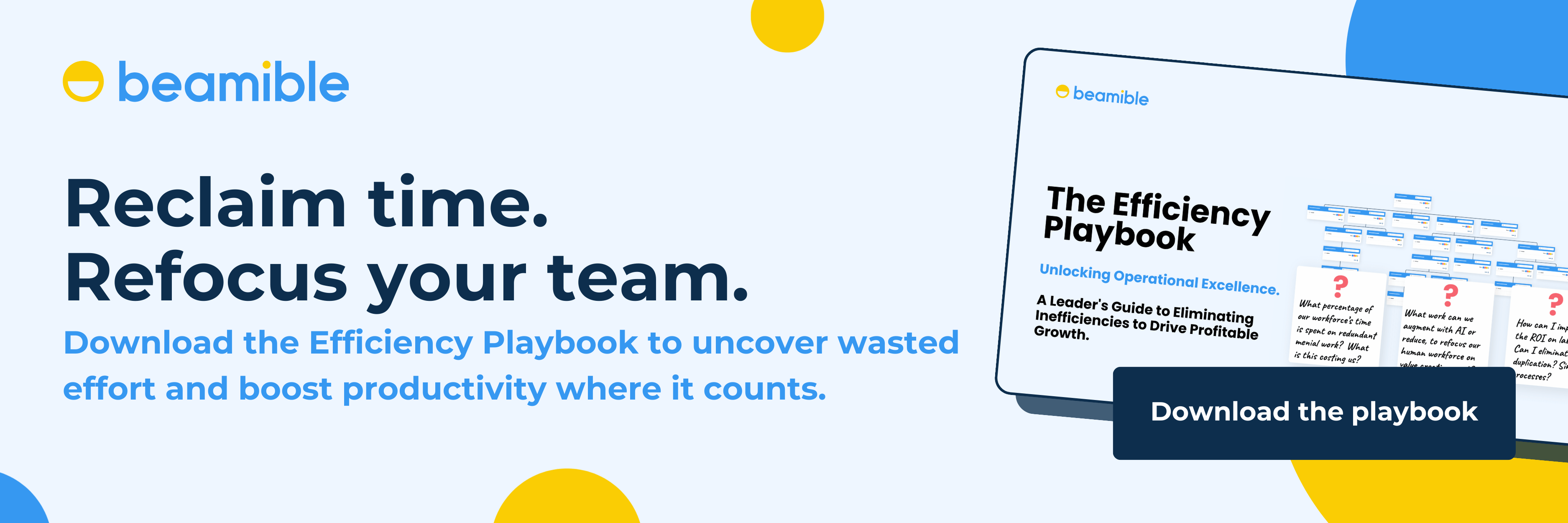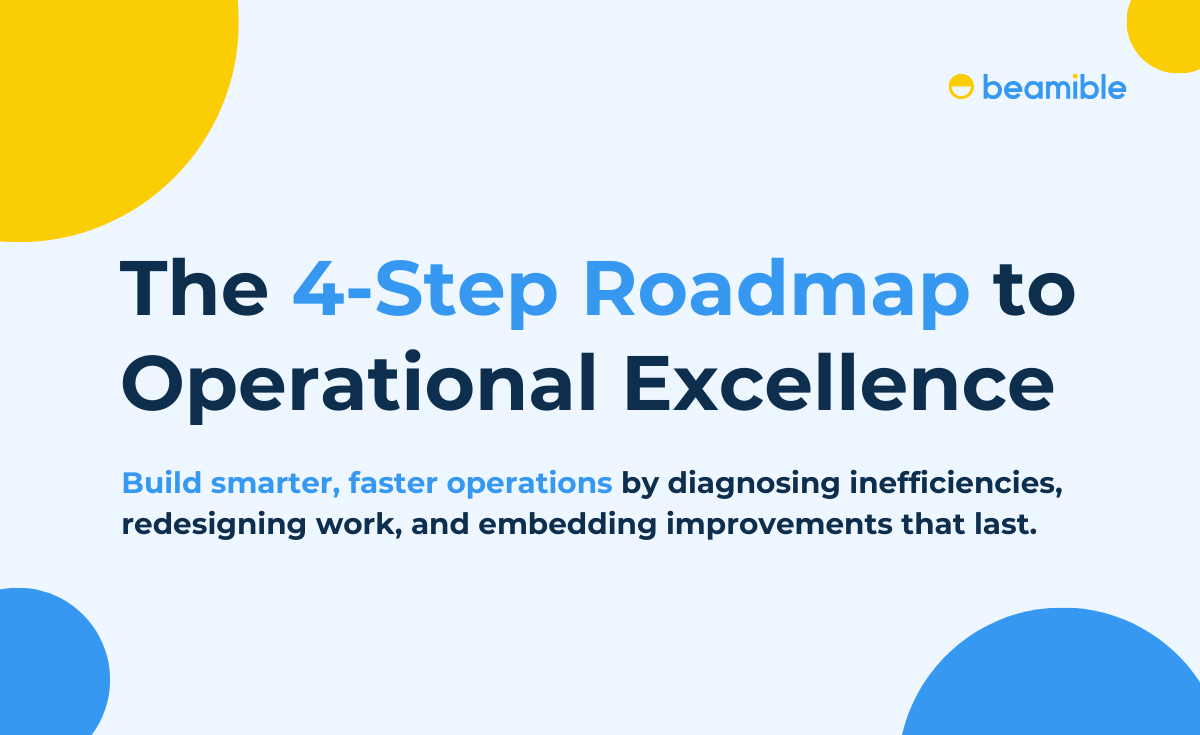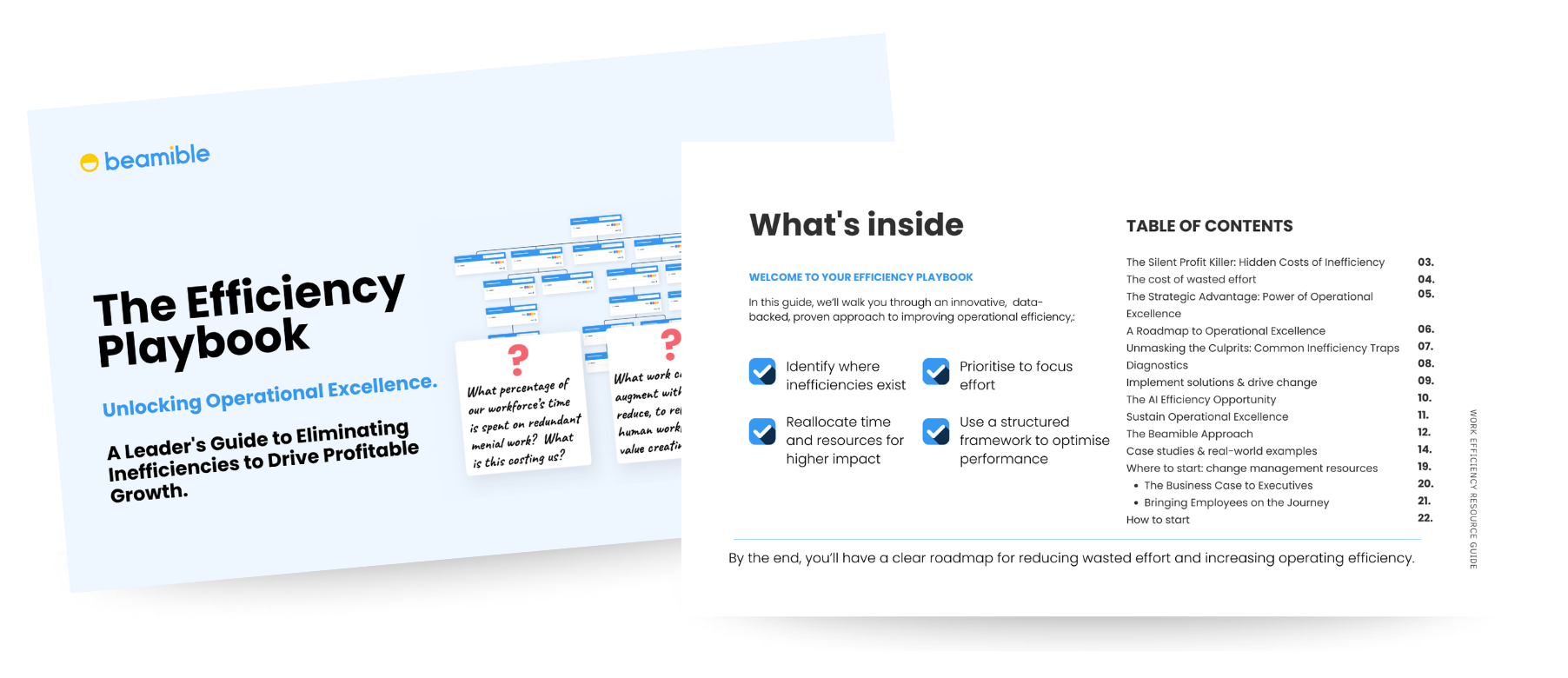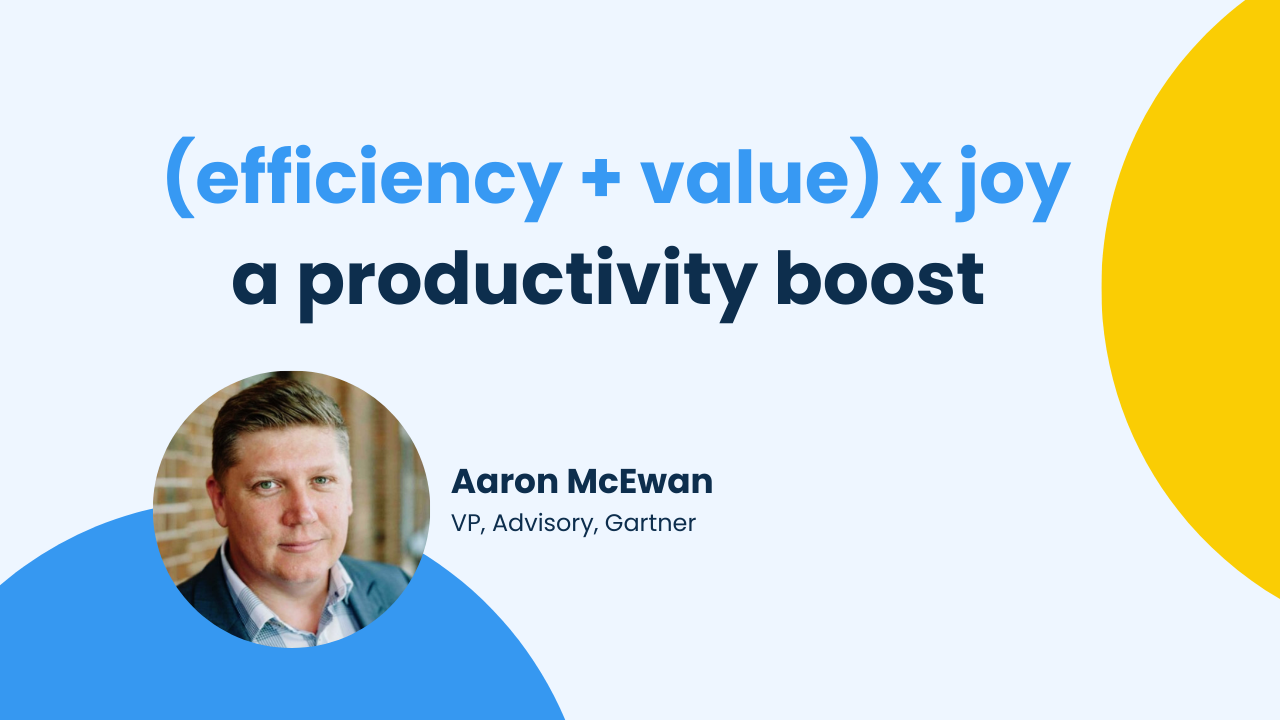 Operational excellence is a discipline. It’s built on visibility, clarity, and the ability to design work with intent. For leaders focused on performance, transformation, and long-term growth, it starts by asking a clear question: How is work getting done?
Operational excellence is a discipline. It’s built on visibility, clarity, and the ability to design work with intent. For leaders focused on performance, transformation, and long-term growth, it starts by asking a clear question: How is work getting done?
Beamible’s data shows that operational excellence comes from repeatable practices embedded in daily workflows. When work is designed, delivered, and measured with purpose, teams perform at a higher level—consistently.
Why Operational Excellence Matters
In efficient organisations, every role is aligned to business goals, and every process supports progress. This structure creates conditions for agility, faster decision-making, and better outcomes.
Operational excellence supports:
- Scalable growth
- Faster execution
- Clear decision-making
- Stronger customer experiences
- Higher team engagement
Work becomes easier to coordinate. Leaders move quickly. Teams know what matters and why it matters. The result is a consistent performance edge that compounds over time.
Common Inefficiency Traps
Many organisations share the same recurring patterns—visible through diagnostics but often overlooked in everyday operations. These include:
- Manual, repetitive admin tasks
- Bottlenecks in workflows and approvals
- Misaligned roles and expectations
- Excessive meetings or duplicated effort
- Unclear priorities or overlapping responsibilities
Lucie Addison and Amaya Elizabeth Mo from ZING & Co describe it well, “The biggest inefficiencies are duplication of work, caused by lack of clarity… The biggest efficiency gains come from being intentional and clear about what to prioritise.”
With the right tools and structure, these patterns are easy to surface and act on.
The 4-Step Roadmap
Operational excellence doesn’t emerge by accident—it’s built through structure. Here’s a proven four-step model to uncover inefficiencies, prioritise change, and embed improvements that last.
Step 1: Diagnose
Start by understanding how time and effort are currently allocated. Move beyond assumptions and gather clear data.
Tools and techniques:
- Task-level mapping (via Beamible)
- Process audits or time-in-motion studies
- Performance and activity data
- Employee feedback loops
- Root cause analysis and value stream mapping
When teams participate in this stage, they bring insight and ownership to the change process.
Step 2: Prioritise
Once the data is clear, use structured frameworks to focus on what will make the biggest difference.
Helpful tools:
- Start/Stop/Continue exercises
- Effort vs. impact prioritisation matrices
- Alignment checks between task, role, and strategy
This step brings focus. It identifies early wins and highlights areas ready for deeper redesign.
Step 3: Implement
Redesign work in a way that lifts both performance and engagement. This can involve:
- Clarifying role boundaries
- Streamlining processes and handovers
- Automating repetitive tasks
- Reallocating effort toward strategic outcomes
- Supporting flexible work models
Beamible helps leaders match capability to opportunity—so teams spend more time on work that matters and are set up to succeed.
Step 4: Sustain
Operational improvements deliver the greatest value when they’re maintained over time. Make reflection and recalibration part of how your teams operate.
Approaches to embed progress:
- Define and track success measures
- Run regular pulse diagnostics
- Add feedback into existing team rituals
- Align team goals and incentives
- Use visual dashboards to keep work visible
With consistent rhythm and visibility, momentum builds naturally.
Beamible in Action
Organisations use Beamible to apply all four steps—quickly and at scale.
One public sector agency used Beamible to map internal service team workflows. They uncovered duplicated tasks across roles and reallocated 15% of capacity to frontline delivery. This shift improved service outcomes while keeping headcount steady
From structure to impact
Every organisation has the potential to operate more effectively. With a clear process and practical tools, teams can build stronger ways of working and unlock long-term value.
Here’s how to get started:
- Map your current workflows and tasks
- Identify which changes create the greatest uplift
- Engage your team in the redesign
- Set up regular tracking to keep progress visible
Operational excellence comes from structure, not guesswork. When teams have clarity and alignment, they deliver faster, with more confidence—and leaders have the visibility they need to scale.
Looking to embed operational excellence in your team?
📘 Download the Efficiency Playbook to access:
- A clear 4-step framework to diagnose and fix inefficiencies
- Tools and techniques to guide each stage of the process
- Real-world examples of role redesign and process simplification
- Actionable tips to sustain progress over time





